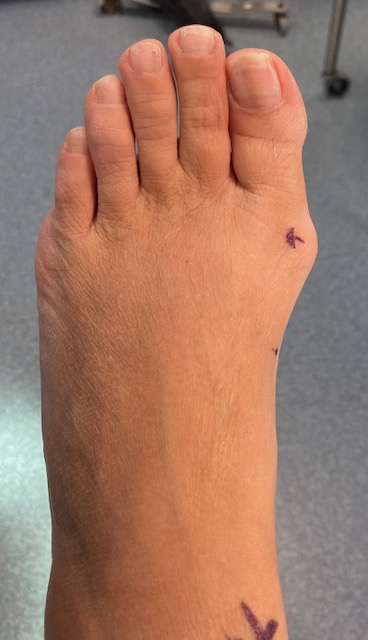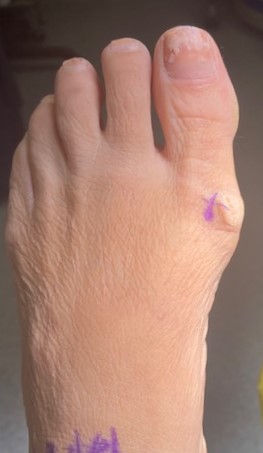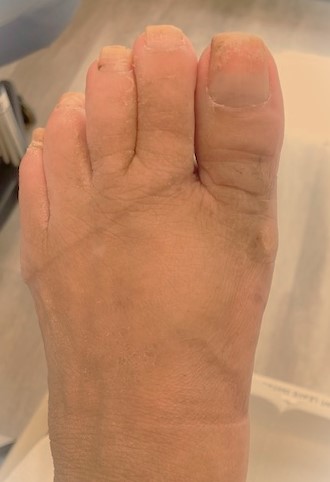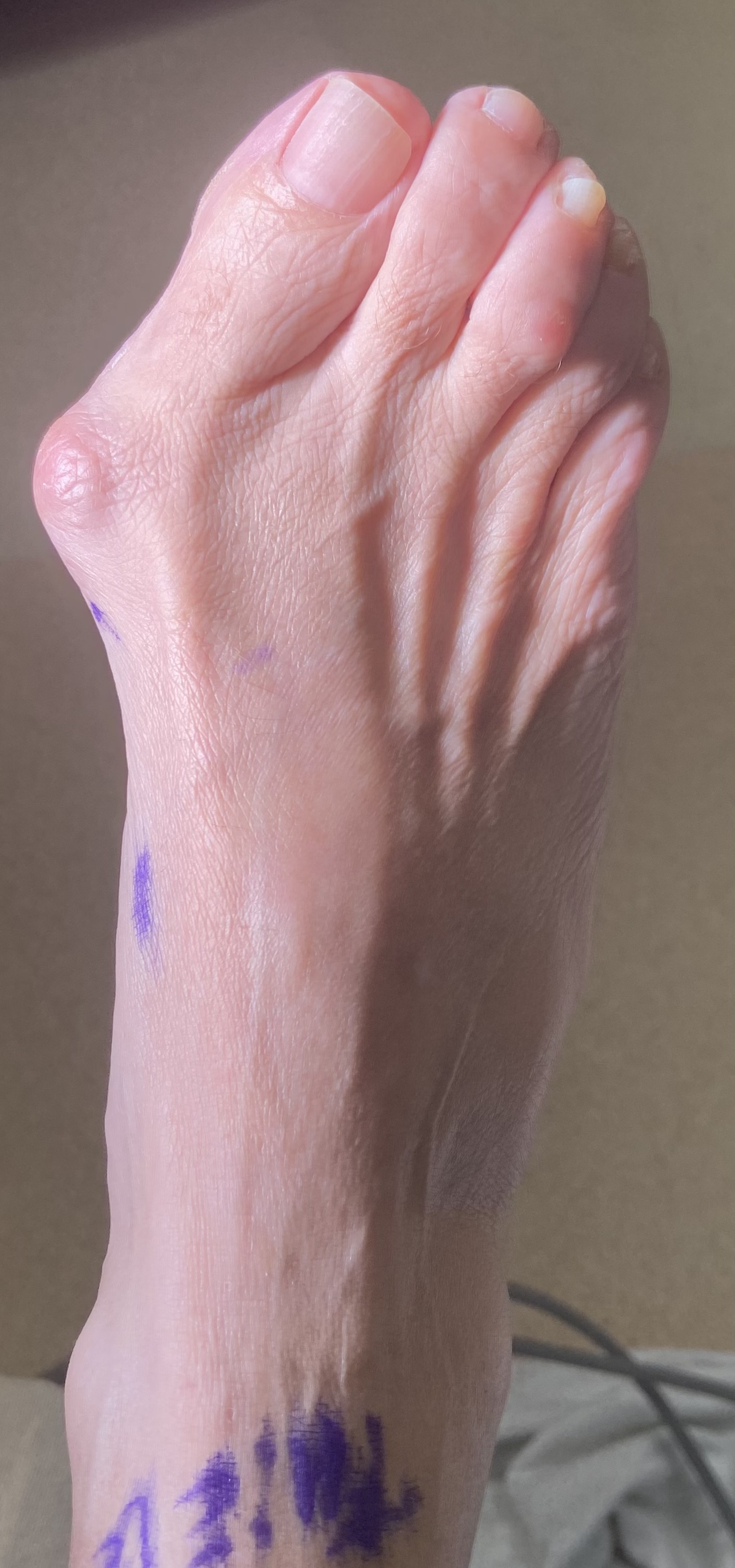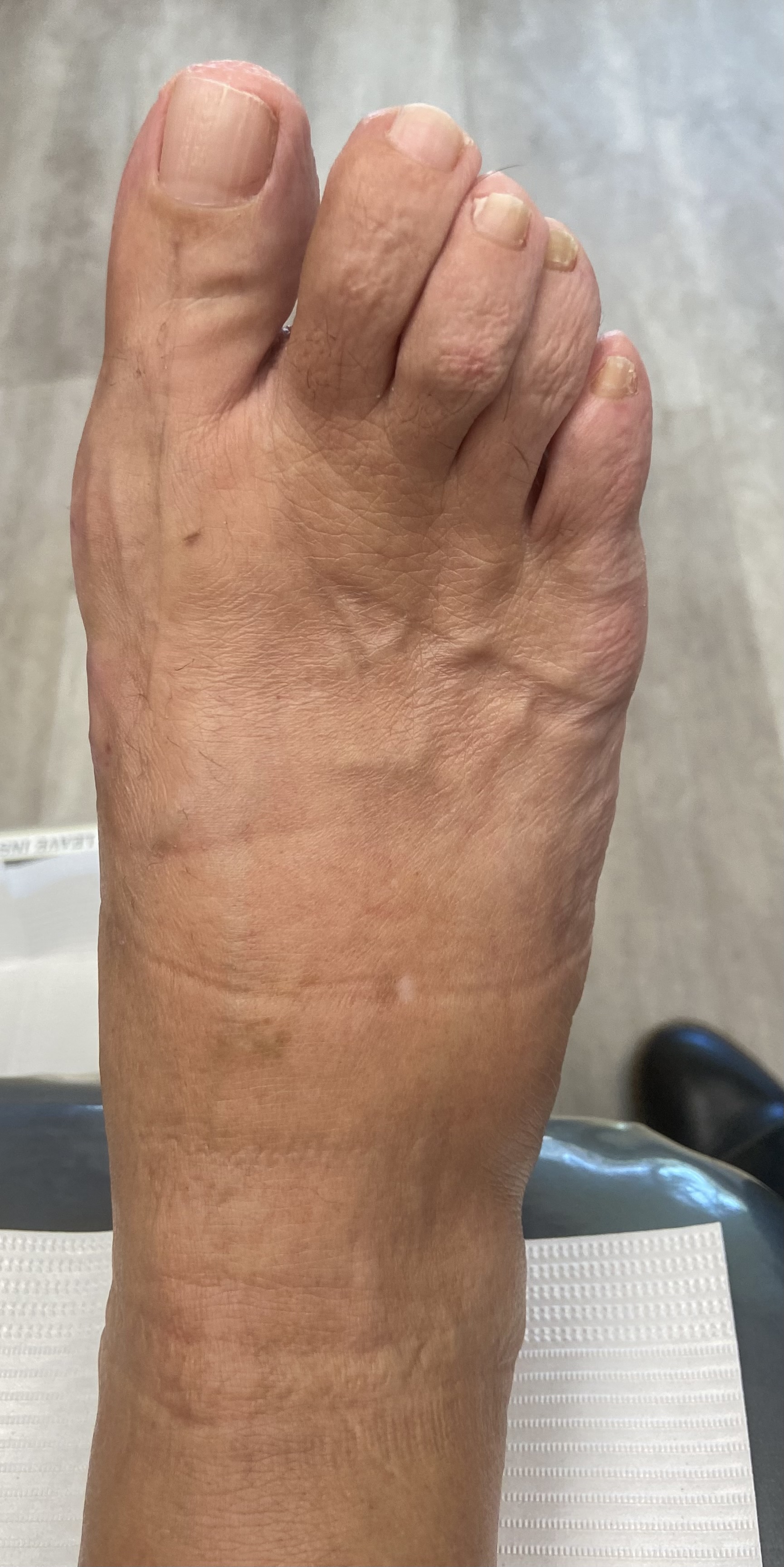Bunions
Our doctors are experts in the repair of all bunion deformities with over 24 years of hospital and private practice experience. The procedure is performed at the hospital or surgery center under intravenous sedation and local anesthesia. The procedure takes approximately 60 minutes to perform. Post operatively, you will be discharged to home 1-2 hours after the procedure. The doctor will prescribe an antibiotic, anti-inflammatory, and pain medication to be taken post operatively to keep you comfortable. Most patients have little discomfort after the procedure which is sufficiently controlled by the prescribed medications. We have performed thousands of these procedures. Our doctors are often asked to lecture and teach their techniques to colleagues, residents, and students. Using the most advanced techniques and years of experience, we provide our patients with a superior functional and cosmetic result. Unlike most foot surgeons, we are able to perform the procedure through a medial (side) approach which hides the scar much better than a dorsal (top) approach. We are also well trained and experienced with revisional bunion surgery from previous failed / recurred procedures. Given our experience, we are often asked by colleagues to take over the more difficult cases. There are several types of bunion procedures which are selected based on the degree of your condition. The doctors will explain the procedure selection, risks, potential complications, and the post operative course in detail during your evaluation and pre operative consultation.
NEW BUNION PROCEDURE MARKETING: There are various types of bunion surgeries. Our doctors will discuss the appropriate procedure for you and your condition. There is aggressive marketing aimed at the public lately about a one size fits all bunion procedures. There are many terms being thrown around like 2D, 3D and 4D and MIS (minimally invasive surgery) bunion corrections. Every patient is unique. There is not one procedure that is best for everyone. The selection of a bunion (hallux valgus) repair procedure is based on many parameters including, but not limited to: severity of the bunion, age of the patient, pre op pain level, existing arthritis in big toe joint, goals of the procedure, time out of work, ability to tolerate required post op course of a procedure. (i.e post op weightbearing), history of blood clots, history of smoking, previous bunion surgery, other foot deformities, etc. Only an expert in this type of surgery can give you all the options including risks and potential complications and advise on the procedure selection not a TV or website add.
Any so called "Lapidus derived procedures" are generally older aggressive, but successful, procedures (i.e. Lapidus - invented 1934 by Paul W. Lapidus) that have gained more recent popularity because of newer cut guides, staples, plate systems invented by the companies doing the marketing. The Lapidus and Modified Lapidus procedures have been around for decades. These are still aggressive procedures that required removal of a joint (1st TM) and fusion of that joint with plates and screws no matter what is advertised. Make no mistake, these are FUSION procedures no matter what they are called. They are generally reserved for very large deformities. They require cast immobilization for at least 4 weeks then protected weight bearing in a boot for another 4 weeks or until the fusion heals. There can be severe problems if that joint does not fuse which more painful surgery with now a bone graft and much more cast immobilization. These companies also like to post before and after x-rays but not the before and after pictures of the scar on the foot. Also, the patient satisfaction rate seems to be under reported.
Recurrences: Recurrences are rare, but all bunions have a chance to return no matter what procedure is performed. Please be careful of the marketing strategies. Talk to our doctors. We do many different types of bunion procedures as stated above. The selection is based on you and your needs. We will explain all procedure options that can give you the best cosmetic and functional outcome with the least risk of complications and recurrence. The goal is to get you back to the activities that you love with an outstanding looking foot.
BUNIONPLASTY® 360 BUNION REPAIR™
The Bunionplasty® 360 Bunion Repair™ procedure is the revolutionary, next-generation minimally invasive bunion surgery (MIBS) that gives your doctor the chance to let you walk right away. It uses patented technology and patent-pending surgical techniques to deliver superior results and a faster return to daily activities. Dr. Thiele and Dr. Bhoola both perform this revolutionary minimally invasive procedure. They were trained by an elite team of doctors that have performed the most of these procedures in the world.
This is a No Fusion (unlike Lapidus) procedure which is performed thru a few tiny incisions which not only produces and superior cosmetic outcome, but allows for immediate weight bearing (walking on the day of the surgery). Joints are not fused, so the range of motion after the procedure is excellent. Most patients are back in sneakers at 6 weeks after surgery. There is no cast, no crutches, or scooter. There is generally not a need for physical therapy after surgery. The few sutures that are used dissolve. Pain after surgery is very mild. Most patients take ibuprofen or Tylenol for a few days. Very rarely are narcotic pains meds required. Please see the before and after photo below. Please visit : Bunionplasty.com for more info or click on the Bunionplasty tab on our home page to bring you directly to the site.
BUNIONPLASTY® 360 BUNION REPAIR™
Before BUNIONPLASTY® 360 BUNION REPAIR™ After (3 months post procedure)

Before BUNIONPLASTY® 360 BUNION REPAIR™ After (2.5 months post procedure)
Before BUNIONPLASTY® 360 BUNION REPAIR™ After (7 weeks post procedure)
Hammer Toes
Our surgeons have performed thousands of hammer toes repairs. They use a very small incision to repair these deformities. If applicable, he tries to hide the scar in the joint crease of the skin. This allows the patient to have a very small near non visible scar. We generally will use a number of different fixation devices (screw, pin, absorbable pins, etc) based on the defomity, patient anatomy and bone quality. Our Doctors are well trained and experienced with plantar plate tears as well. This is a more complex form of a hammer toe and often requires a very technical repair that most foot surgeons are not trained to perform.
